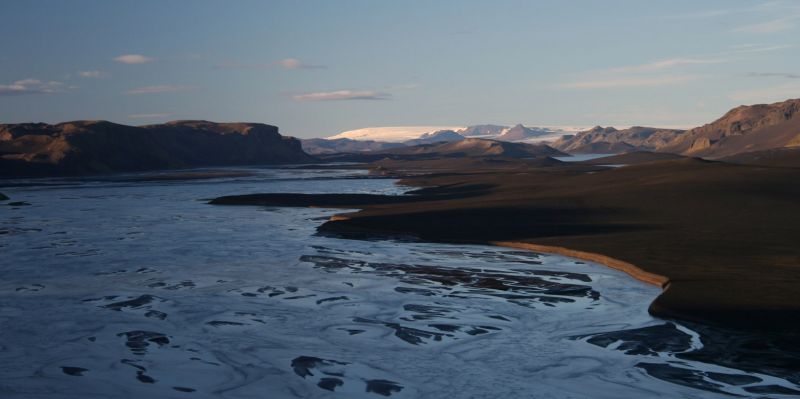No Glaciers, No Water? ETH Zurich Study Aims to Find Out
Published on by Water Network Research, Official research team of The Water Network in Academic
The world’s largest rivers begin in glaciated mountain regions. However, climate change may cause many glaciers to disappear. Will water become scarce?
By: Dr. Matthias Huss

The world’s largest rivers have their sources in glaciers – will the global population be left high and dry without the “eternal” ice? A glacial river in Vatnajökull, Iceland. (Image: Matthias Huss/ETH Zurich)
There are around 200,000 glaciers worldwide. They play a central role in the water cycle, particularly in the middle and low latitudes, by offsetting runoff fluctuations. Rivers are lifelines on which billions of people depend worldwide, either directly or indirectly.
Will water become scarce in the near or distant future if glaciers become increasingly smaller or disappear completely? Will the Alps, the Himalayas, the Rocky Mountains and the Andes continue to act as water towers? We set out to answer this question in a study of all the earth’s mountain regions and the drainage basins of their large rivers.
Decisive “peak water"
We used a glacier model that describes the development of glaciers worldwide and their future runoff until the end of the 21st century. First, the good news: ice-covered mountains will continue to provide enough water throughout the year in future. In an initial phase, climate change will actually cause the runoff to increase, as water stored as ice is released. However, if the glacier becomes too small, it will reach a tipping point, which we call “peak water”.
The key point: in order to properly plan the distribution of water in future, for example for agricultural irrigation or hydropower, we have to know whether we are before or after “peak water”. In the Alps, the tipping point is now. In most of the drainage basins in South America, the glaciers are already providing less water. However, in Asia and North America, the total runoff from glaciers will continue to increase until around the middle of the century, and will only then begin its downward trend.
Read full article: ETH Zurich
Media
Taxonomy
- Resource Management
- Environmental Policy
- Water Resource Management
- Water Resource Mapping
- Environmental Consequences
- Integrated Water Management
- Environment
- Sustainable Water Resource Management
- Natural Resource Management
- Water Resource Management
1 Comment
-
Pure Tripe!